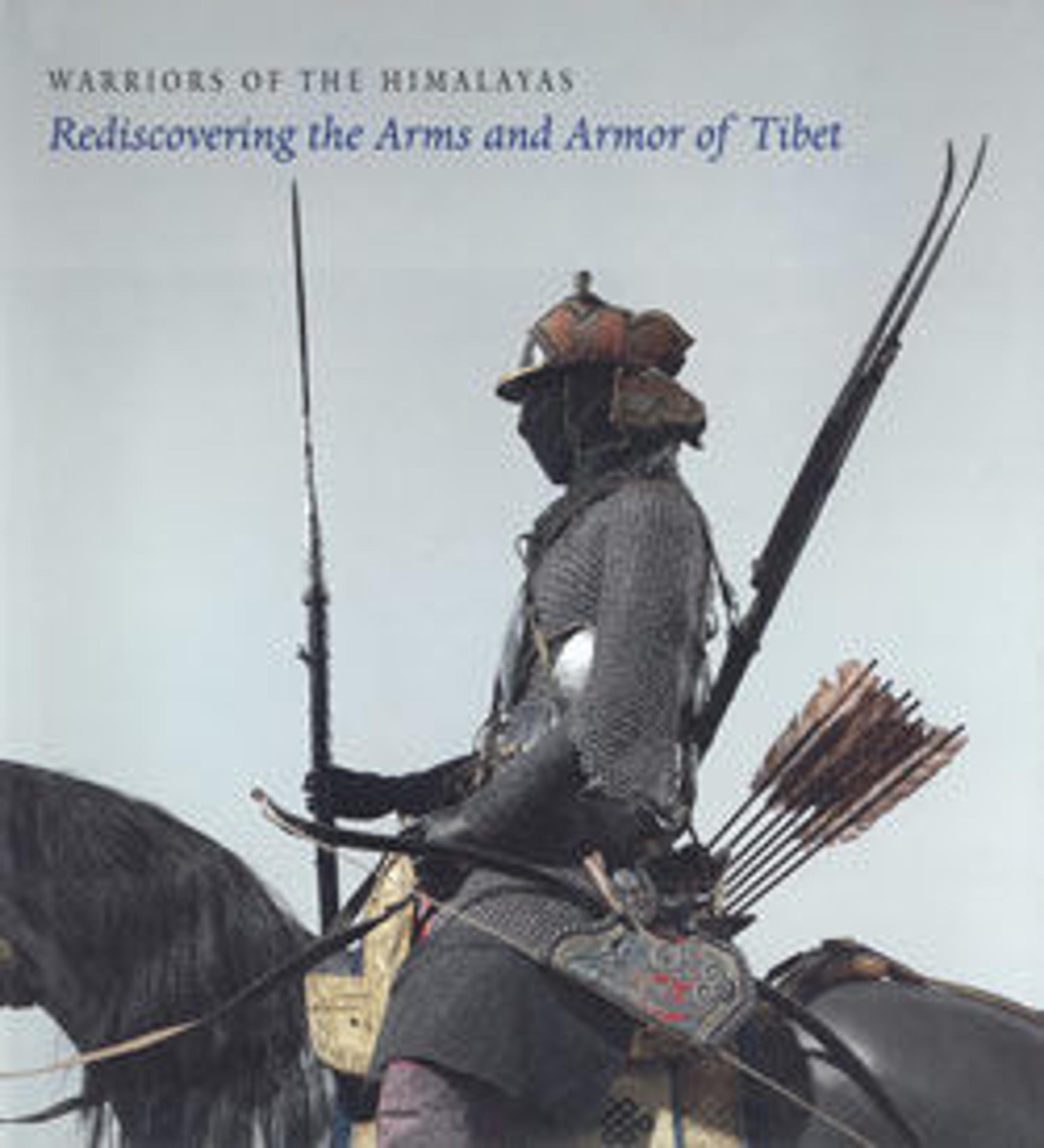Bow Case, Quiver, and Belt (gzhu shubs dang mda' shubs)
Matching sets of bow case, quiver, and belt of this relatively early type are very rare. The few examples that exist in museum collections were acquired mostly in the early twentieth century. Both the bow case and the quiver are covered densely with decoration executed in black lines and golden brown shellac (now darkened with age), employing a method very similar to the technique found on some Tibetan leather arm defenses and horse armor. They are also fitted with domed bosses of pierced and chiseled iron damascened with gold and decorated with dragons, scrollwork, and blossoms. These bosses relate closely to the ironwork seen on Tibetan swords, saddle plates, and other objects.
Artwork Details
- Title:Bow Case, Quiver, and Belt (gzhu shubs dang mda' shubs)
- Date:15th–17th century
- Culture:Tibetan or Mongolian
- Medium:Leather, shellac, pigment, wood, iron, gold
- Dimensions:Bow case; L. 25 in. (63.5 cm) W. 16 1/2 in. (41.9 cm); quiver; L. 20 in. (50.8 cm) W. 11 1/2 in. (29.2 cm); belt; L. 50 3/4 in. (128.9 cm) W. 1 1/4 in. (3.2 cm)
- Classification:Archery Equipment-Bows
- Credit Line:Purchase, Arthur Ochs Sulzberger Gift, 2003
- Object Number:2003.344a–c
- Curatorial Department: Arms and Armor
More Artwork
Research Resources
The Met provides unparalleled resources for research and welcomes an international community of students and scholars. The Met's Open Access API is where creators and researchers can connect to the The Met collection. Open Access data and public domain images are available for unrestricted commercial and noncommercial use without permission or fee.
To request images under copyright and other restrictions, please use this Image Request form.
Feedback
We continue to research and examine historical and cultural context for objects in The Met collection. If you have comments or questions about this object record, please contact us using the form below. The Museum looks forward to receiving your comments.
